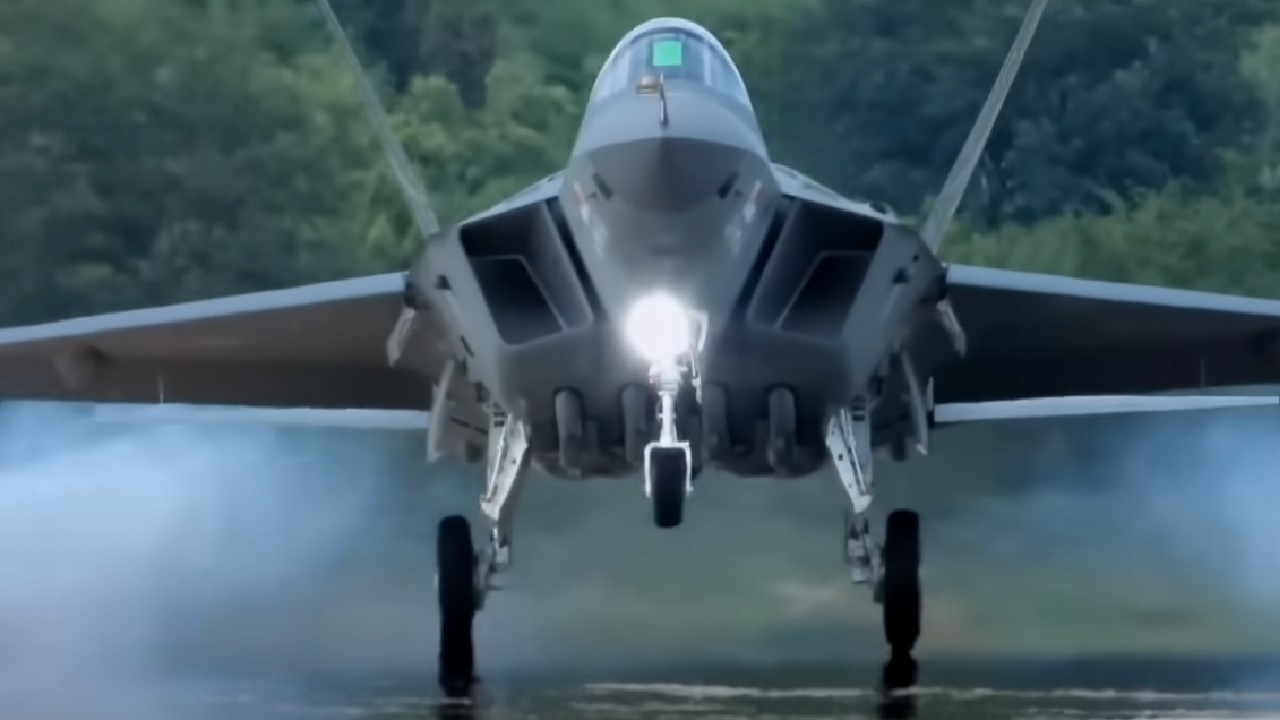One good homegrown South Korean fighter plane story deserves another. A few short weeks after our story on the South Korean KAI T-50 Golden Eagle (황금 독수리 / hwang-geum dogsuli) fighter plane, the Republic of Korea has sent another homegrown fighter plane on her maiden flight; this time it is the KAI KF-21 Boramae (보라매; young hawk, or fighting hawk).
As with the T-50, the development of the KF-21 could not have come at a better time, given North Korea’s ever-increasing belligerence and the Unholy Alliance between Vladimir Putin’s revanchist Russia and Xi Jinping’s expansionist Red China. Let’s take a closer look at what we know so far about South Korea’s fledgling Young Hawk.
From Golden Eagle to Young Fighting Hawk
The KF-21 Boramae made its maiden flight on July 26. The title of the CNN news story on the event, “South Korea joins supersonic fighter club as KF-21 jet takes to skies,” is somewhat misleading. It might leave the reader with the impression that this is the first Mach-busting warbird in the ROK arsenal. In fact, the 2002-vintage Golden Eagle, at a max airspeed of Mach-1.5, is most certainly capable of supersonic flight. After all, the ROK Air Force’s “Black Eagles” demonstration team chose the T-50B for a reason.
In any event, just like the T-50, the KF-21 represents an effort by the South Korean government to have at least some domestic component to its fleet of fighter planes, after depending on foreign imports for so many decades. However, unlike the T-50, the KF-21 is not a joint venture with America’s Lockheed Martin. Rather, the Boramae paired the ROK government with Indonesia, and with the private-sector manufacturer Korean Aerospace Industries. The three entities hold a respective 60%, 20%, and 20% stake in the program’s shares.
Neither fish nor fowl, the KF-21 is stealthier than any fourth generation fighter — and indeed it bears at least a passing cosmetic resemblance to the F-22 Raptor. However, it does not carry weapons in internal bays like bona fide fifth generation fighters, though internal bays may be introduced later in development. Presumably these specs would place the Boramae in the 4.5-generation category.
A DefenseNews report authored by Daehan Lee provided the following details:
“The KF-21, armed with 4 METEOR air-to-air missiles and piloted by Maj. Junhyeon Ahn of the Air Foce Test and Evaluation Unit, took off from an Air Force base near KAI’s headquarters in Sacheon, South Gyeongsang Province, at 3:40 p.m. local time. The fighter jet flew at a speed of 400 km/h (200 knots) for 30 minutes to check basic functions of the jet’s body, landing safely at 4:13 p.m.”
Ready to Battle China’s J-20?
When hypothetically pitted against the planes of the DPRK’s air force, South Korea’s Fighting Hawk appears more than up to the task. After all, the newest and most sophisticated North Korean warbird is the late-1970s-vintage MiG-29 “Fulcrum.” More generally, Kim Jong Un’s aerial arsenal is overstocked with even older aircraft, such as the Chengdu J-7/F-7 “Fishcan,” which is in turn based off of the MiG-21 “Fishbed”.
The bigger question is how well the Boramae would cope against the top-of-the-line fighters from China’s People’s Liberation Army Air Force. If a recent report from the Hong Kong-based South China Morning Post is to be believed, Macau-based military analyst Antony Wong Tong, president of the Macau International Military Association, a member of the China Military Science and Technology Activity Center, declares that the KF-21 is not even close to rivaling the Chinese FC-31 fighter jet – let alone the J-20. However, Mr. Wong Tong does credit the South Korean jet as a potentially viable rival to later J-10 variants.
Time will tell. We at 1945 will keep our readers posted on developments related to the KAF-21 as they become available.
Christian D. Orr is a former Air Force officer, Federal law enforcement officer, and private military contractor (with assignments worked in Iraq, the United Arab Emirates, Kosovo, Japan, Germany, and the Pentagon). Chris holds a B.A. in International Relations from the University of Southern California (USC) and an M.A. in Intelligence Studies (concentration in Terrorism Studies) from American Military University (AMU). He has also been published in The Daily Torch and The Journal of Intelligence and Cyber Security. Last but not least, he is a Companion of the Order of the Naval Order of the United States (NOUS).

